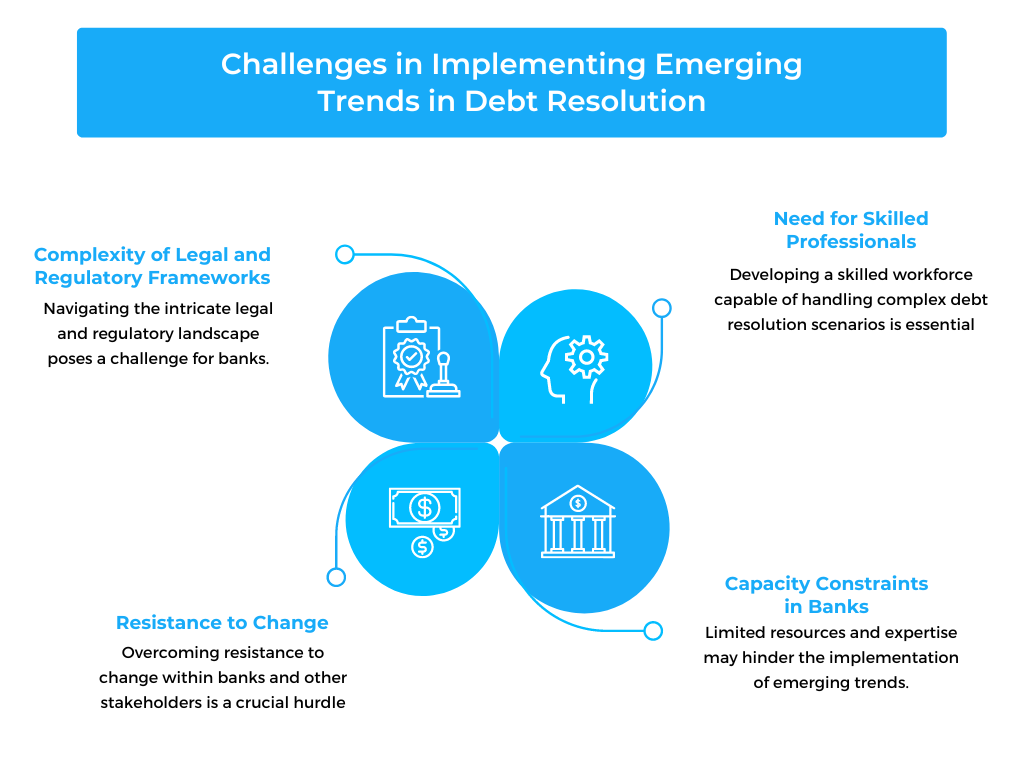Emerging Trends in Transfer of Loan Exposures and Debt Resolution: Implications for India Banking Sector

Evolving Landscape of Loan Exposures and Debt Resolution in India’s Banking Sector
The banking sector in India is experiencing a dynamic shift in the way loan exposures are managed and debt is resolved. With changing regulatory frameworks, emerging technologies, and evolving market conditions, it has become imperative for banks to adapt to the evolving landscape of loan exposures and debt resolution practices. This article explores the current scenario and emerging trends in the transfer of loan exposures and debt resolution in the Indian banking sector, and the implications these trends have for banks and financial institutions. By understanding the evolving landscape and its potential impact, banks can proactively navigate the challenges and leverage the opportunities presented in this rapidly changing environment.
Overview of Transfer of Loan Exposures: Trends and Practices
The transfer of loan exposures has become a prominent practice in the banking sector, enabling banks to manage their risk profiles and optimize their balance sheets. This section provides an in-depth overview of the trends and practices observed in the transfer of loan exposures in India. It explores the various mechanisms used, such as loan sales, securitization, and loan participation, highlighting their benefits and challenges. Additionally, it examines the key players involved in loan exposures transfer, including banks, non-banking financial institutions, and asset reconstruction companies. By understanding the trends and practices in loan exposures transfer, banks can effectively strategize and adapt to the evolving landscape, enhancing their risk management capabilities and ensuring financial stability.
Debt Resolution Mechanisms: Current Scenario and Emerging Trends
Debt resolution mechanisms play a crucial role in managing and resolving non-performing assets in the Indian banking sector. This section provides an overview of the current scenario and emerging trends in debt resolution practices. It examines the existing mechanisms such as debt restructuring, asset reconstruction, and insolvency proceedings, along with their effectiveness and challenges. Additionally, it explores the emerging trends in debt resolution, including alternative dispute resolution mechanisms, pre-packaged insolvency, and asset monetization strategies. By analyzing the current scenario and emerging trends in debt resolution, banks can better navigate the complexities of distressed assets, improve recovery rates, and strengthen their balance sheets.
Implications of Emerging Trends in Transfer of Loan Exposures for India’s Banking Sector
The emerging trends in the transfer of loan exposures have significant implications for the banking sector in India. This section explores the potential impact of these trends on banks and financial institutions. It analyzes the benefits, risks, and challenges associated with the transfer of loan exposures, including improved risk management, enhanced liquidity, and diversification of portfolios. It also discusses the implications for credit availability, pricing, and competition within the banking sector. Furthermore, it examines the regulatory framework and policy implications that accompany these emerging trends. By understanding the implications of these trends, banks can align their strategies, adapt to the changing dynamics, and harness the potential benefits while effectively managing the associated risks.
Regulatory Framework and Policy Implications for Debt Resolution in India
The regulatory framework and policy landscape play a crucial role in shaping debt resolution practices in the Indian banking sector. This section explores the current regulatory framework governing debt resolution and analyzes its implications for banks and financial institutions. It examines the role of regulatory bodies such as the Reserve Bank of India (RBI) and the Insolvency and Bankruptcy Board of India (IBBI) in setting guidelines and norms for debt resolution processes. Additionally, it discusses recent policy initiatives and reforms aimed at improving the effectiveness and efficiency of debt resolution mechanisms. Moreover, it highlights the challenges and opportunities that arise from the regulatory framework, including the need for harmonization of laws and regulations across different sectors. By understanding the regulatory framework and policy implications, banks can navigate the legal landscape, ensure compliance, and effectively resolve debt in a timely and efficient manner.
Technology and Innovation in Loan Exposures Transfer and Debt Resolution
Technology and innovation are transforming the landscape of loan exposures transfer and debt resolution in the Indian banking sector. This section explores the role of technology and innovation in revolutionizing these processes. It discusses the adoption of digital platforms, data analytics, and artificial intelligence in streamlining loan transfers, improving due diligence, and enhancing risk assessment. It also examines the emergence of blockchain technology for secure and transparent transaction recording. Furthermore, it explores the use of fintech solutions and online marketplaces for efficient loan portfolio management and debt resolution. By leveraging technology and embracing innovation, banks can enhance operational efficiency, reduce costs, and accelerate the debt resolution process. However, it also highlights the challenges and risks associated with technology implementation, including data security and privacy concerns. Understanding the potential of technology and innovation enables banks to stay ahead of the curve and unlock new opportunities for loan exposures transfer and debt resolution in the evolving digital era.
Challenges in Implementing Emerging Trends in Debt Resolution:

- Complexity of Legal and Regulatory Frameworks: Navigating the intricate legal and regulatory landscape poses a challenge for banks. Adapting to evolving regulations and ensuring compliance require significant effort and resources.
- Resistance to Change: Overcoming resistance to change within banks and other stakeholders is a crucial hurdle. Encouraging a shift in mindset and embracing new debt resolution methods may encounter resistance from traditional practices.
- Capacity Constraints in Banks: Limited resources and expertise may hinder the implementation of emerging trends. Banks may face challenges in building specialized teams or accessing external expertise for efficient debt resolution processes.
- Need for Skilled Professionals: Developing a skilled workforce capable of handling complex debt resolution scenarios is essential. Recruiting and retaining professionals with expertise in debt resolution and technological advancements is a priority.
Opportunities in Implementing Emerging Trends in Debt Resolution:
- Improved Efficiency: Adopting emerging trends in debt resolution can streamline processes and lead to faster resolution timelines. Leveraging technology and innovative tools can automate manual tasks, reducing time and effort.
- Faster Resolution Timelines: Implementing efficient debt resolution mechanisms can expedite the resolution of distressed assets. Accelerating resolution timelines enhances liquidity and minimizes losses for banks.
- Enhanced Recovery Rates: Utilizing advanced data analytics and risk assessment techniques can lead to better recovery rates. Improved understanding of borrower behavior and repayment capacities enables optimized debt resolution strategies.
- Collaboration and Innovation: Collaborating with fintech companies and asset reconstruction companies opens avenues for innovation. Joint efforts can leverage expertise and technology to develop novel approaches to debt resolution.
Conclusion:
Embracing Change and Harnessing the Potential of Emerging Trends in Debt Resolution for India’s Banking Sector
The emergence of new trends in debt resolution presents both challenges and opportunities for India’s banking sector. By embracing change and effectively navigating the complexities, banks can leverage technology and innovation to streamline processes, accelerate resolution timelines, and enhance recovery rates. Collaboration with fintech companies and asset reconstruction firms fosters innovation and promotes novel approaches to debt resolution. However, addressing challenges such as regulatory frameworks, resistance to change, and capacity constraints is crucial. By capitalizing on these opportunities, banks can strengthen their debt resolution capabilities, optimize risk management practices, and contribute to a healthier banking sector and overall economic growth. Embracing the potential of emerging trends is not only necessary but essential for the sustainable success and resilience of India’s banking sector.